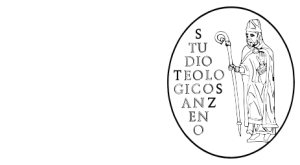
Numero 6
Salvati per Gesù, morto e risorto
Gennaio - Dicembre 2022
Abstract e allegati
di Andrea GainoFull Text
di Augusto BarbiFull Text
Abstract
The first Christian communities needed to find a meaning for Jesus's death, which on the historical level seemed like a defeat of his mission and his intentions. This reflection tries to track back, in the first Christian texts, the different attempts of inserting Jesus's death in the divine plan of salvation or in the historical-salvific continuity (necessity of death; the death of the righteous; the refused prophet), and above all, to highlight the value of salvation intrinsic to this death through different paradigmas (the 'for us' formula; in worship and in ransom). Of each paradigma we show the potential, the limits or the need for a modern reinterpretation.
Sommario
Alla luce della fede pasquale si imponeva alle prime comunità il compito di dare senso alla morte di Gesù che sul piano storico appariva come una sconfitta della sua missione e delle sue pretese. Questa riflessione si propone come scopo di rintracciare, a livello della prima tradizione cristiana, i vari tentativi di inscrivere la morte di Gesù nel disegno salvifico divino o nella continuità storico-salvifica (necessità del morire; giusto sofferente; profeta rifiutato), ma soprattutto di evidenziare la valenza salvifica attribuita a questa morte attraverso differenti modelli (la formulazione “per noi”; quella cultuale e del riscatto). Di ogni modello vengono segnalati le possibilità, i limiti o la necessità di una reinterpretazione per l’oggi.
di Cristina SimonelliFull Text
Abstract
A well-known patristic axiom - what is not assumed is not saved - if not isolated from the fluid background against which it stands, allows us to verify the co-presence of soteriological perspectives and christological items in ancient Theology. In this exploration, the relevance of the sentence is shown through the documentation concerning a monk from Gaul in the 4th century, Leporius, whose instances are not very different from the interrogations of the better-known Nestorius. On the whole, thanks also to a quick flash on the relationship between the figures involved in the dossier and the late development of the Pelagian debate, we can recover the link between anthropology and soteriology, which is also relevant in contemporary research.
Sommario
Un noto assioma patristico - quel che non è assunto non è salvato – se non isolato dallo sfondo fluido su cui si staglia, consente di verificare la compresenza di prospettive soteriologiche e tematiche cristologiche nella teologia antica. Nella presente ricognizione se ne mostra la portata attraverso la documentazione relativa a un monaco di Gallia del IV secolo, Leporio, le cui istanze non sono molto diverse dagli interrogativi del più noto Nestorio. Nell’insieme, grazie anche a un rapido flash sulla relazione fra i personaggi coinvolti nel dossier e il tardo sviluppo del dibattito pelagiano, si può recuperare il nesso fra antropologia e soteriologia, rilevante anche nella contemporaneità.
di Andrea GainoFull Text
Abstract
In this study, the 'moral momentum' tries to analyse the existential importance of the proposed topic: the salvific meaning of the Easter Mystery. Starting with an acknowledgement of the forms in which the search for redemption in humanity manifests itself, we then observe how salvation manifests itself in the uniqueness of Jesus Christ's story. Here we find a potential answer to the search for salvation and a new opening of human freedom to its own fulfilment.
Sommario
Nel percorso di questo studio, il “momento morale” si propone di indagare la rilevanza esistenziale del tema investigato: il valore salvifico del mistero pasquale di Gesù Cristo. Partendo da una ricognizione delle forme in cui si manifesta la ricerca di salvezza nella condizione umana, si va ad ascoltare come la salvezza si manifesta nella singolarità della vicenda di Gesù Cristo. In essa si torva la via per una possibile risposta alla ricerca di salvezza e una apertura inedita della libertà umana al proprio compimento.
di Tullio SembeniniFull Text
Abstract
The liturgy of the celebration of the Mystery of Christ is presented as a moment in the history of salvation, in which the Church opens itself to the active presence of Christ in the Spirit (first part). The presentation of the Easter Triduum shows the essential content of the ritual and its sacral dynamycs, towards its eschatological fulfilment (second part). The liturgy activates the relationship of faith with and in Christ, based on the comprehension of His mystery and on the experience of salvation He brings.
Sommario
La liturgia, celebrazione del Mistero di Cristo, si pone come momento della storia della salvezza, in cui la chiesa si apre alla presenza operante di Cristo nello Spirito (prima parte). La presentazione del Triduo Pasquale mostra il contenuto fondamentale della celebrazione e la sua dinamica sacramentale, verso il compimento escatologico (seconda parte). La liturgia attua quel rapporto di fede con Cristo, in ordine alla comprensione del suo mistero e all’esperienza della sua salvezza.
di Sergio GaburroFull Text
Abstract
Starting from the close relationship between justification and divinization, affirmed with plural language in the biblical horizon, we intend to highlight the theme of salvation as an always open question. After all, it cannot be otherwise with respect to the excess of the revealing Event that every Christian theology tries to translate into words. For this reason, we can speak of a Christian salvation in which the different ecumenical sensitivities, due to the history crossed and the cultural contexts frequented, emerge as different, legitimate and mutually enriching
Sommario
Muovendo dallo stretto rapporto esistente tra giustificazione e divinizzazione, affermato con linguaggio plurali nell’orizzonte biblico, si intende evidenziare il tema della salvezza quale questione sempre aperta. Del resto, non può essere altrimenti rispetto all’eccedenza dell’Evento rivelativo che ogni teologia cristiana tenta di tradurre in parole. Per questo, si può parlare di una salvezza cristiana in cui le diverse sensibilità ecumeniche, dovute alla storia attraversata e ai contesti culturali frequentati, emergono come diverse, legittime e reciprocamente arricchenti.
di Valentino SartoriFull Text
Abstract
The article presents the last period of thought of Max Scheler in its most suggestive and challenging traits, and tries to capture its richness without neglecting its problematic aspects. Starting from its central period of thought on God, Scheler takes a definite salvific direction which does not stop in the last years, but it becomes more solid and deep, involving God Himself in the story of salvation not only as a Saviour, but also as Saved, together with mankind and the world.
Sommario
L’articolo affronta, nel suo profilo suggestivo e sfidante, l’ultima stagione della riflessione di Max Scheler, tentando di coglierne la ricchezza, senza sottacerne la problematicità. Sin dalla fase mediana del suo pensiero su Dio, questo si caratterizza nei termini di una decisa piega soteriologica, che non si interrompe negli ultimi anni, ma si conferma e approfondisce, coinvolgendo nel dramma della salvezza Dio stesso, non solo o prima di tutto in qualità di Salvatore, ma come “salvato” insieme all’uomo e al mondo.
di Paolo CordioliFull Text
Abstract
The reception of the myth of Orphaeus in ancient Christianity tried to enhance its salvific traits, taking after the Jewish tale of the conversion of the hero from Thrace. In particular, through a detailed work of symmetries and antithesis, Clemens of Alexandria replaced the musician Orphaeus with the figure of the personified Logos, describing the transformative character of his 'New Singing' (cf. Protr. 1, 4-6). The image of Orphaeus taming the beasts, reproduced in the Christian catacombs in Rome, seems to confirm the salvific hope placed in Christ, who becomes 'Our Orphaeus' (cf. Euthymios Zigabenos, In Psalterium, proemium).
Sommario
La ricezione del mito di Orfeo nel cristianesimo antico ha cercato di riguadagnarne gli aspetti soteriologici, ponendosi nel solco del racconto giudaico della conversione dell’eroe trace. In particolare, tramite un accurato lavoro di simmetrie e antitesi, Clemente d’Alessandria ha sostituito al leggendario citaredo la figura del Logos incarnato, descrivendo il carattere trasfigurante del suo «Canto Nuovo» (cf. Protr. I,4-6). L’immagine di Orfeo che ammansisce gli animali, riprodotta nelle catacombe cristiane di Roma, sembra confermare la speranza soteriologica riposta in Cristo, divenuto «Nostro Orfeo» (cf. Eutimio di Zigabene, In Psalterium, proemium).
di Silvia D’Ambrosio e Antonio ScattoliniFull Text
Abstract
This article offers an iconologic reading of a peculiar work of art: the image of Christ Saviour that dominates the highest part of Piazza Celimontana. The reconstruction of the historical context around the artwork and the detailed reading of the images offer a unique point of view on Christ Redemptor.
Sommario
L’articolo offre una lettura iconologica di una singolare opera musiva: un’immagine straordinaria di Cristo Liberatore che domina la parte più alta della Piazza Celimontana. La ricostruzione del contesto storico in cui si inserisce l’opera e l’attenta lettura delle immagini offrono un singolare approccio alla visione di Cristo Redentore.
di Andrea TrevisanFull Text
Abstract
The celebration of the diocesan synodes established by the Council of Trent was becoming less practiced, until it almost stopped in the mid Eighteenth century. Hence the 1782 Synode of Verona is considered exceptional. The synode was used by the bishop Morosini to reassert the good aims of his Jansenist pastoral, in contrast with the ideas of Pius VI. When the time came to choose a new bishop for the church in Verona, the pope chose somebody with a completely different mindset: Giovanni Andrea Avogadro. A former jesuit, he was a new type of diocesan priest: both an educator and a spiritual shepherd for the people. His aim was to create a new generation of priests, who would then become the first of a long line of saints and founders of religious movements and institutions which were a feature of the church of Verona for almost two centuries.
Sommario
La celebrazione dei sinodi diocesani stabilita dal Concilio di Trento andò via via affievolendosi, fino ad esaurirsi quasi del tutto nella seconda metà del Settecento. Da qui l’eccezionalità del sinodo veronese del 1782. Esso servì al vescovo Morosini per ribadire la bontà della propria pastorale filo giansenistica, in polemica con Pio VI. Quando si trattò di scegliere il nuovo pastore della chiesa veronese il papa lo volle con una impostazione pastorale totalmente diversa. Giovanni Andrea Avogadro, ex gesuita, era portatore di una immagine di sacerdote diocesano nuova: educatore e pastore del popolo. Il suo intento fu capace di dar luogo ad una nuova generazione di chierici, che sarebbero stati primi di una lunga schiera di santi e fondatori di opere e istituzioni religiose che avrebbero segnato la chiesa veronese per un secolo e mezzo.
Numeri precedentiVedi tutti

Alla ricerca dei ministeri battesimali
Vai al sommario

Teologia e formazione. Studi in memoria di don Serio De Guidi
Vai al sommario

Divenire Chiesa: soggetti e comunità
Vai al sommario

La Parola di Dio nelle parole umane. Contributi degli studenti
Vai al sommario





